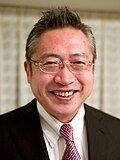| |||||||||||||||||||||||||||||||||||||||||||||||||||||||||||||||||||||||||||||||||||||||||||||
All 480 seats in the House of Representatives 241 seats needed for a majority | |||||||||||||||||||||||||||||||||||||||||||||||||||||||||||||||||||||||||||||||||||||||||||||
|---|---|---|---|---|---|---|---|---|---|---|---|---|---|---|---|---|---|---|---|---|---|---|---|---|---|---|---|---|---|---|---|---|---|---|---|---|---|---|---|---|---|---|---|---|---|---|---|---|---|---|---|---|---|---|---|---|---|---|---|---|---|---|---|---|---|---|---|---|---|---|---|---|---|---|---|---|---|---|---|---|---|---|---|---|---|---|---|---|---|---|---|---|---|
| Turnout | 69.19% ( 69.19% ( | ||||||||||||||||||||||||||||||||||||||||||||||||||||||||||||||||||||||||||||||||||||||||||||
| |||||||||||||||||||||||||||||||||||||||||||||||||||||||||||||||||||||||||||||||||||||||||||||
 Districts and PR districts shaded according to winners' vote strength | |||||||||||||||||||||||||||||||||||||||||||||||||||||||||||||||||||||||||||||||||||||||||||||
| |||||||||||||||||||||||||||||||||||||||||||||||||||||||||||||||||||||||||||||||||||||||||||||
| This article is part of a series on |
 |
|---|
|
|
General elections were held in Japan on August 30, 2009 to elect the 480 members of the House of Representatives. The opposition Democratic Party of Japan (DPJ) defeated the ruling coalition (Liberal Democratic Party (LDP) and New Komeito Party) in a landslide, winning 221 of the 300 constituency seats and receiving 42.4% of the proportional block votes for another 87 seats, a total of 308 seats to only 119 for the LDP (64 constituency seats and 26.7% of the proportional vote).[1][2][3]
Under Japan's constitution, this result virtually assured DPJ leader Yukio Hatoyama would be the next Prime Minister of Japan. He was formally named to the post on September 16, 2009.[4] Prime Minister Tarō Asō conceded late on the night of August 30, 2009, that the LDP had lost control of the government, and announced his resignation as party president.[5] A leadership election was held on September 28, 2009.
The 2009 election was the first time since World War II that voters mandated a change in control of the government to an opposition political party.[6] It marked the worst defeat for a governing party in modern Japanese history, was only the second time that the LDP had not been able to form a government after an election since its formation in 1955, and was the first time that the LDP lost its status as the largest party in the lower house; the only other break in LDP control since 1955 had been for a 3-year period from 1993 to 1996 (first 11 months in opposition, then participating in a coalition government under a socialist prime minister).[7]
- ^ "'Major win' for Japan opposition". BBC News. 2009-08-30. Archived from the original on 2019-06-11. Retrieved 2009-08-31.
- ^ "衆院党派別得票数・率(比例代表)". (in Japanese) Jiji. 2009-08-31. Archived from the original on 2014-02-20.
- ^ "衆院党派別得票数・率(選挙区)". (in Japanese) Jiji. 2009-08-31. Archived from the original on 2014-02-20.
- ^ "Japan's election: The vote that changed Japan". The Economist. 2009-09-03. Archived from the original on 2009-09-06. Retrieved 2009-09-05.
- ^ Kyung Lah (2009-08-31). "Japanese opposition set for victory; PM quits as party head". CNN. Archived from the original on 2009-08-31. Retrieved 2009-08-31.
- ^ Ikegami, Akira (3 February 2014). "現代日本の足跡に学ぶ(15) 「本格的」政権交代の反省". 日本経済新聞. Archived from the original on 22 January 2023. Retrieved 3 February 2014.
09年総選挙後、「戦後初の本格的な政権交代」と指摘されました。有権者は「自民党の麻生太郎政権を支持し続けるか」「民主党の鳩山由紀夫代表を選ぶのか」という構図の下、1票を投じることができたためです。
- ^ Stockwin, J.A.A. (2011). The rationale for coalition governments In Alisa Gaunder (Ed.) Routledge Handbook of Japanese Politics, Taylor & Francis, p. 36–47.





